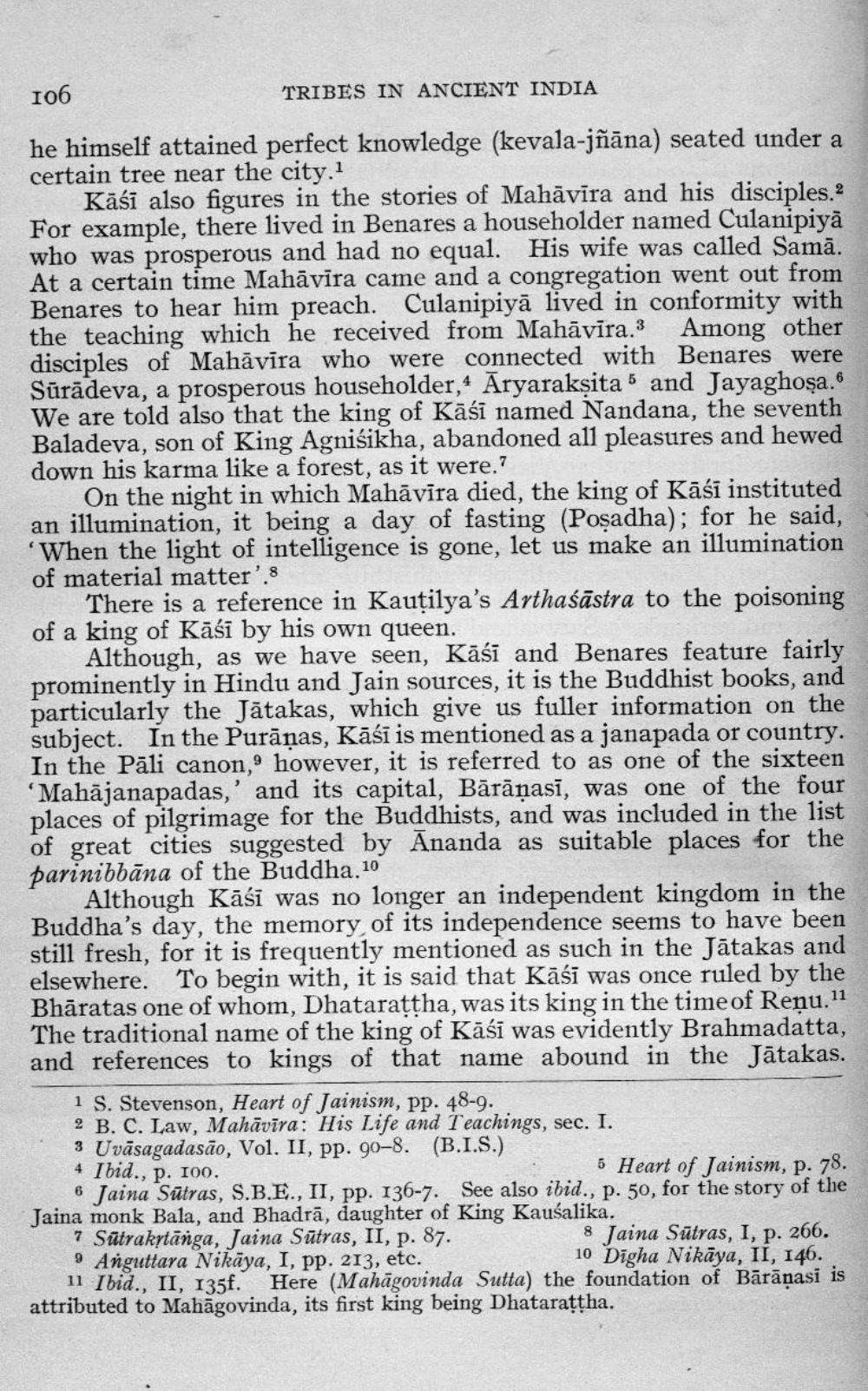________________
106
TRIBES IN ANCIENT INDIA
he himself attained perfect knowledge (kevala-jñāna) seated under a certain tree near the city.1
Kāśī also figures in the stories of Mahavira and his disciples.2 For example, there lived in Benares a householder named Culanipiya who was prosperous and had no equal. His wife was called Samā. At a certain time Mahavira came and a congregation went out from Benares to hear him preach. Culanipiya lived in conformity with the teaching which he received from Mahavira.3 Among other disciples of Mahavira who were connected with Benares were Surädeva, a prosperous householder, Aryarakṣita and Jayaghosa." We are told also that the king of Kāśī named Nandana, the seventh Baladeva, son of King Agniśikha, abandoned all pleasures and hewed down his karma like a forest, as it were.7
On the night in which Mahavira died, the king of Kasi instituted an illumination, it being a day of fasting (Posadha); for he said, 'When the light of intelligence is gone, let us make an illumination of material matter'.8
There is a reference in Kautilya's Arthasastra to the poisoning of a king of Kāśī by his own queen.
9
Although, as we have seen, Kāśī and Benares feature fairly prominently in Hindu and Jain sources, it is the Buddhist books, and particularly the Jātakas, which give us fuller information on the subject. In the Purānas, Kāśī is mentioned as a janapada or country. In the Pāli canon, however, it is referred to as one of the sixteen 'Mahajanapadas,' and its capital, Bārāṇasī, was one of the four places of pilgrimage for the Buddhists, and was included in the list of great cities suggested by Ananda as suitable places for the parinibbana of the Buddha.10
Although Kasi was no longer an independent kingdom in the Buddha's day, the memory of its independence seems to have been still fresh, for it is frequently mentioned as such in the Jātakas and elsewhere. To begin with, it is said that Kāśī was once ruled by the Bharatas one of whom, Dhataraṭṭha, was its king in the time of Reņu."1 The traditional name of the king of Kāśī was evidently Brahmadatta, and references to kings of that name abound in the Jātakas.
1 S. Stevenson, Heart of Jainism, pp. 48-9.
2 B. C. Law, Mahavira: His Life and Teachings, sec. I.
3 Uvasagadasão, Vol. II, pp. 90-8. (B.I.S.)
4 Ibid., p. 100.
5 Heart of Jainism, p. 78.
6 Jaina Sutras, S.B.E., II, pp. 136-7. See also ibid., p. 50, for the story of the Jaina monk Bala, and Bhadra, daughter of King Kauśalika.
7 Sutrakṛtänga, Jaina Sutras, II, p. 87. 9 Anguttara Nikaya, I, pp. 213, etc.
8 Jaina Sutras, I, p. 266. 10 Digha Nikaya, II, 146.
11 Ibid., II, 135f. Here (Mahagovinda Sutta) the foundation of Bārāṇasi is attributed to Mahagovinda, its first king being Dhataraṭṭha.




